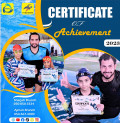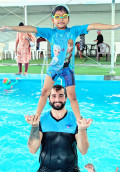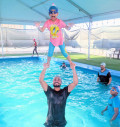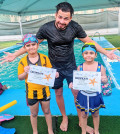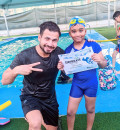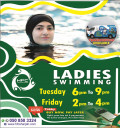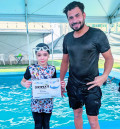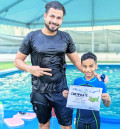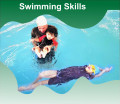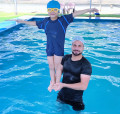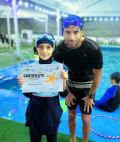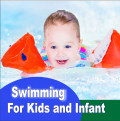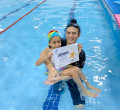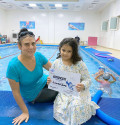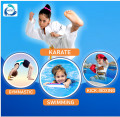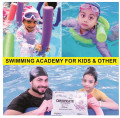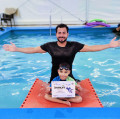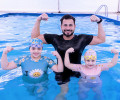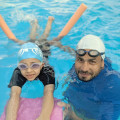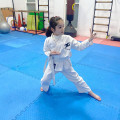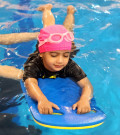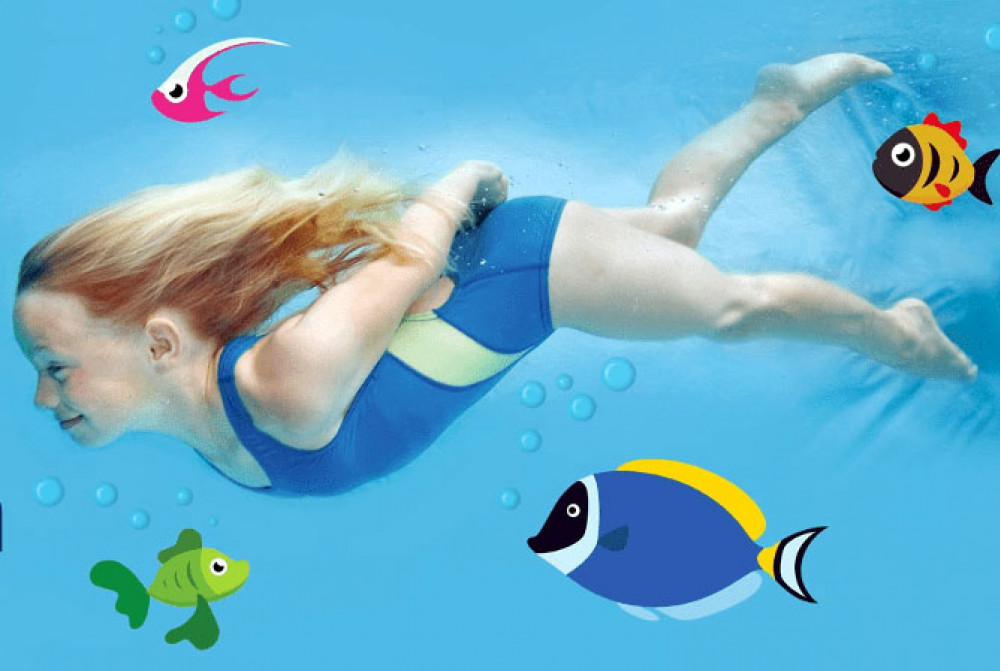
Swim Like a Fish: How to Learn Kids
2023-11-22 - swimmingSwimming is not just a skill; it's a life-saving ability and
a source of endless fun for kids. In this guide, we'll explore the journey of
teaching kids how to swim, emphasizing the importance of starting early,
choosing the right instructor, and making the learning process enjoyable.
Introduction
Swimming holds a special place in a child's development.
Beyond the joy it brings, swimming enhances physical health, cognitive skills,
and instills a sense of water safety. As parents, understanding how to facilitate
this learning journey is crucial for the overall well-being of our little ones.
Choosing the Right Age
Determining the ideal age for a child to start swimming
lessons is a common concern for parents. Factors such as the child's comfort in
water, motor skills development, and emotional readiness should all be taken
into account. Striking the right balance ensures a positive introduction to
swimming.
Preparing for the First Swim
Before diving into the first lesson, it's essential to
gather the necessary swim gear and create a positive mindset. Ensuring your
child feels comfortable and excited about their upcoming aquatic adventure sets
the stage for a successful learning experience.
Finding the Right Instructor
The role of the instructor cannot be overstated. While some
parents opt for self-learning programs, having a certified instructor provides
structured guidance and a supportive learning environment. The right instructor
can make all the difference in a child's swimming journey.
Learning Water Safety
In addition to mastering strokes, instilling basic water
safety rules is paramount. Teaching kids how to stay safe in and around water
builds confidence and lays the foundation for a lifetime of safe swimming
practices.
Building Basic Swimming Skills
Starting with fundamental skills like floating techniques
and introductory strokes sets the groundwork for more advanced swimming.
Patience is key during this phase as kids familiarize themselves with the water
and begin to develop basic swimming techniques.
Making Learning Fun
Children learn best when they're having fun. Incorporating
games, toys, and props into swimming lessons not only keeps kids engaged but
also helps them associate swimming with enjoyment, creating positive memories
around the activity.
Gradual Progression
Setting achievable goals and celebrating small victories is
crucial in the learning process. Whether it's mastering a new stroke or
floating independently, recognizing and celebrating these milestones encourages
a sense of accomplishment.
Overcoming Fear of Water
It's not uncommon for children to have a fear of water.
Addressing these fears with patience and understanding, along with gradual
exposure techniques, can help children overcome their anxieties and build
confidence in the water.
Consistency is Key
Consistency is the backbone of any learning process.
Establishing a regular practice schedule ensures that kids continue to build on
their skills and maintain a positive attitude towards swimming.
Parental Involvement
Parents play a pivotal role in their child's swimming
journey. Being actively involved, offering encouragement, and fostering a
positive attitude towards swimming creates a supportive environment for learning.
Transition to Advanced Techniques
As children become more comfortable in the water,
introducing advanced strokes and potentially joining swimming clubs or teams
can further enhance their skills and passion for swimming.
Monitoring Physical Development
Beyond the skill development, swimming contributes to
improved coordination, strength, and overall physical health. Monitoring these
positive changes reinforces the holistic benefits of learning how to swim.
Addressing Challenges
It's normal for kids to face challenges in their swimming
journey. Plateaus in learning can occur, but understanding how to address these
challenges and seeking professional advice when needed ensures continued
progress.
Celebrating Achievements
Every step forward, no matter how small, is an achievement
worth celebrating. Recognizing and celebrating progress boosts a child's
confidence and reinforces the joy of swimming, fostering a lifelong love for
this essential skill.
Conclusion
Teaching kids how to swim is a rewarding journey that goes
beyond the pool. It's about instilling a love for physical activity, promoting
safety, and creating positive memories. By starting early, choosing the right
instructor, and maintaining a fun and consistent learning environment, we set
our kids on a path to becoming confident and skilled swimmers.







.jpg)




















